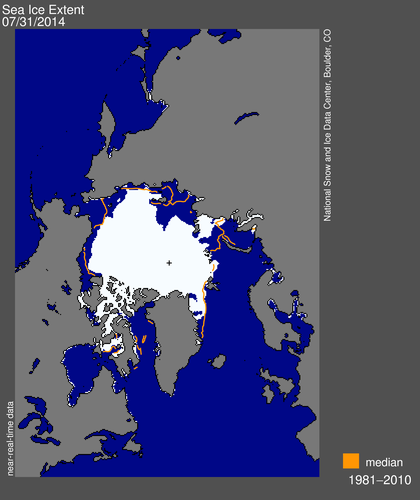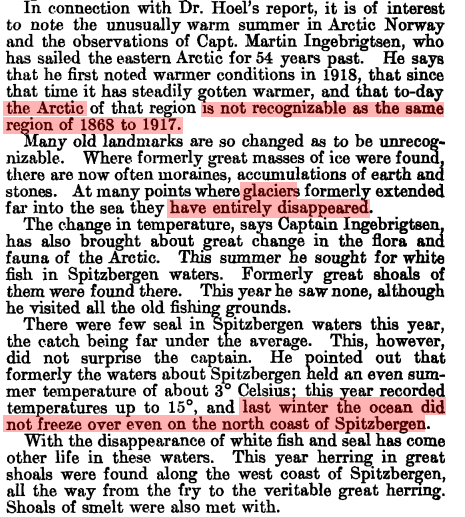In 1922, you could sail north of 81N in ice-free water
This year you couldn’t make it to 80N in ice-free water
There was no sea ice on the North Coast of Spitsbergen in 1922, even during winter. This year that region is still frozen over.
Experts say that the Arctic is disappearing due to CO2, because they are completely incompetent and have no idea what they are talking about.






Arctic sea ice melt is unprecedented (in the satellite era). 🙂
There is less ice now than anytime during the 20th century – read the IPCC report!
The IPCC also told me in 1990 that it global surface temps should be warmer than now.
Are you pointing out the IPCC – AR4 that Jimbo pointed out above, Kassau?
Sorry: Kassu
There is less ice now than anytime during the 20th century – read the IPCC report!
…some idiot wants to go back to the LIA
.. and this is why many ships are presently glued in ice? Who is the idiot, I wonder!
Not sure how accurate those satellite readings were in the first half of the 20th century…
One hopes that there is a sarc missing here. Otherwise you are chum in shark infested waters. LOL
1922 — Strange Things Happening in the Frozen Arctic
http://chroniclingamerica.loc.gov/lccn/sn84026749/1922-12-03/ed-1/seq-63.pdf
http://quixoteslaststand.com/2012/05/11/1922-strange-things-happening-in-the-frozen-arctic/
What was the Antarctic doing at this time?
Colder and less snow?
Everybody knows Arctic history began in 1979…/sarc.
Of course, that it just happens to coincide with the last maximal ice coverage, is merely coincidental.
Based on the actions of the rest of the Team, makes one wonder if the media will start ‘adjusting’ their old articles to show every day and every point on earth in the past was a Garden of Eden.
Don’t feed them any ideas.
1922 Alarmism was remarkably the same as today:
“…the Antarctic icecap is much the more extensive and more massive, and, they hold, it is actually still increasing by evaporation from the immense sea areas of the Southern Hemisphere and condensation over the great ice-covered Antarctic Continent. With ice ever forming above and a sea growing gradually warmer below, the process must eventually overbalance, the undermined glaciers disintegrate, and the icecap break up. Mountain after mountain of ice will fall into the sea, be swept northwards by the currents, and melt, thus bringing about, but at a much more rapid rate, the threatened inundation of the land by the rising of the sea..”
http://nla.gov.au/nla.news-article115752561
5 May 1922
I think the alarmism of the 1920s could beat up the alarmism of the 2010s
http://trove.nla.gov.au/ndp/del/article/22542518
In 1948, Scientists dreamed of melting Antarctica’s ice sheet and digging it up.
Now they dream of growing the Antarctic ice sheet to cover the southern hemisphere.
What a weird mob!